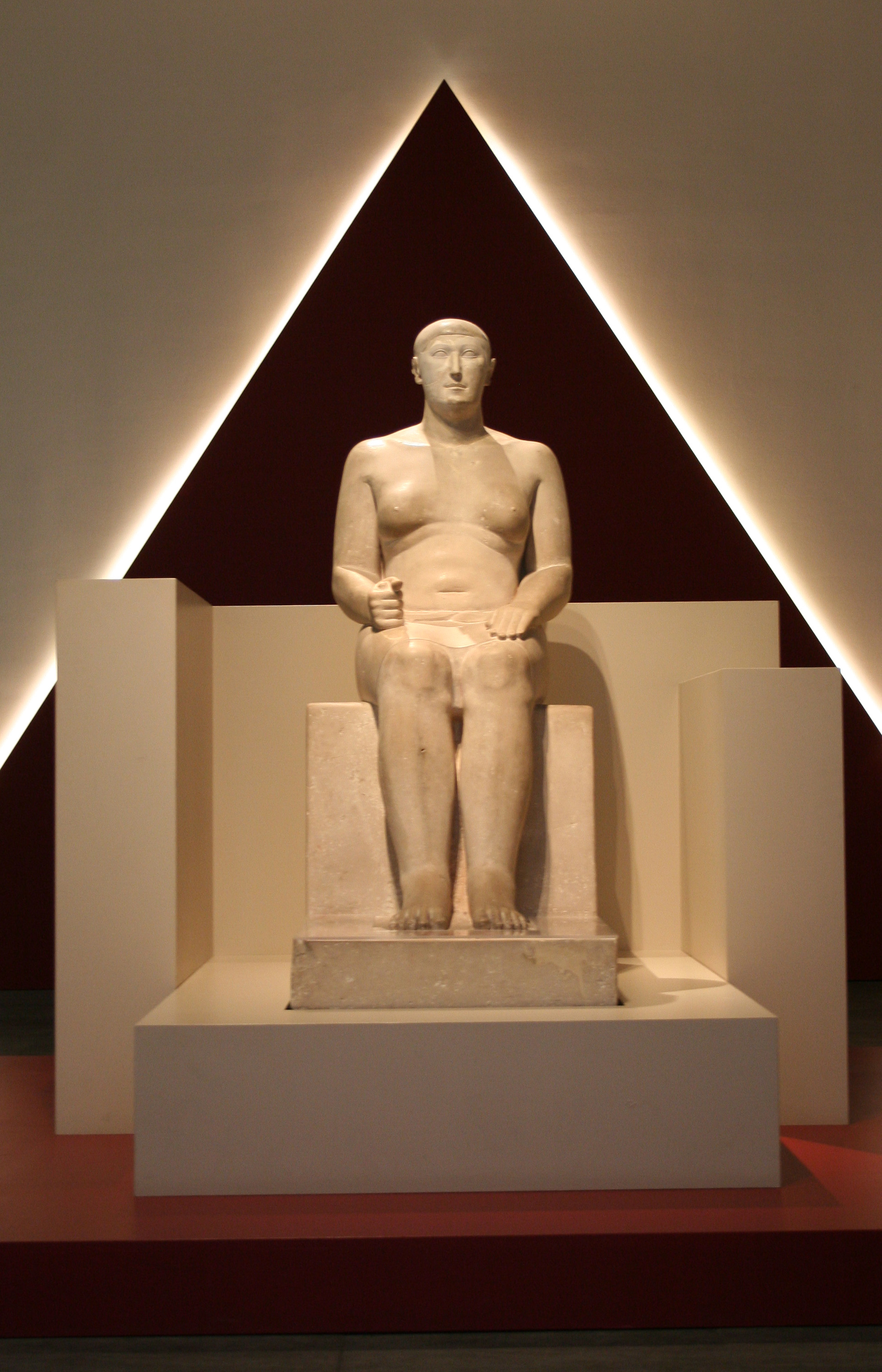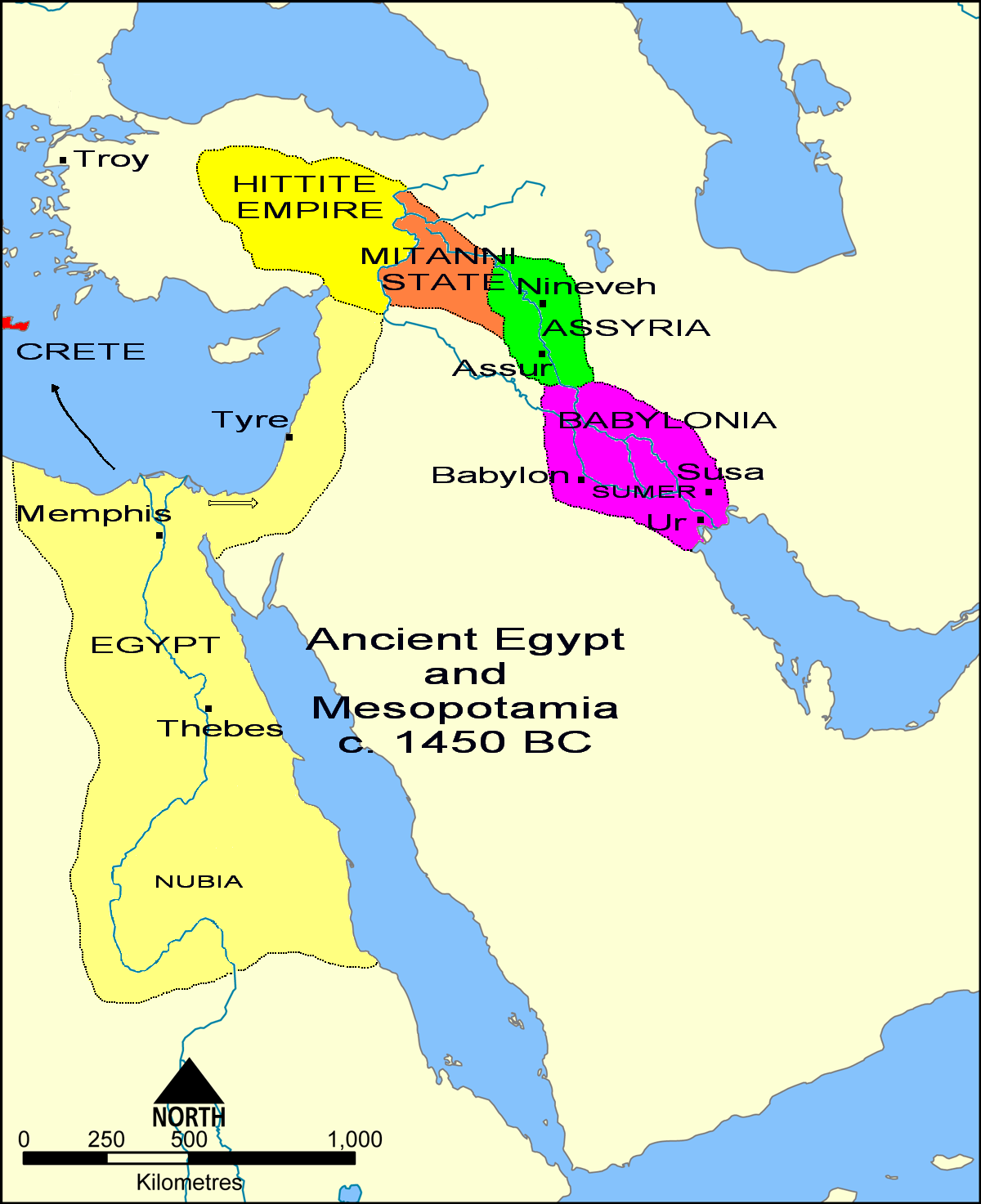|
Resseneb (son Of Ankhu)
Resseneb was a short-lived vizier in Upper Egypt during the 13th Dynasty, preceded by his father, the famous Ankhu, and succeeded by his brother Iymeru. Family He was the son of the vizier Ankhu and was born to Mereryt. His younger brother was the vizier Iymeru. His sister was Senebhenas, married to Wepwauthotep. Attestations Resseneb is attested in several sources. He is first attested as 'Chief Scribe of the Vizier', serving his father, the vizier Ankhu, and later became a 'vizier' himself. Papyrus Boulaq 18 (smaller manuscript) The Papyrus Boulaq 18 (smaller manuscript) contains a list of entries made by Neferhotep concerning expenditures associated with baking and brewing, dated to Year 6, 1st Peret onwards. It mentions the Chief Scribe of the Vizier, Resseneb and the estate of Vizier Ankhu. Papyrus Brooklyn 35.1446 The Papyrus Brooklyn 35.1446 The Brooklyn Papyrus 35.1446 is the modern term for an ancient Egyptian document that is now in the Brooklyn Museum (Ne ... [...More Info...] [...Related Items...] OR: [Wikipedia] [Google] [Baidu] |
Ankhu
Ankhu was an Egyptian vizier of the early 13th Dynasty, who lived around 1750 BC. Family Ankhu was the son of a vizier. Labib Habachi proposed that his father was the vizier Zamonth. The mother of Ankhu is known as Henutpu, the name of Zamonth's wife is published as Henut. Habachi wonders whether ''Henut'' is a mistake or short version of Henutpu. The name Henut is otherwise not attested. Detlef Franke agreed with this identification and calculates that Ankhu must have been 50 to 60 years old under king Khendjer. Ankhu was married to a woman called Mereret. Ankhu was the father of two further viziers: Resseneb and Iymeru. The family formed a strong dynasty of high court officials. One of the daughters of the couple was called Senebhenas. She was married to the ''overseer of the half domain'' Wepwawethotep. The latter was related to Queen Aya, albeit it remains uncertain in which way. Biography Ankhu is known from several monuments dating to the reigns of the 13th Dyna ... [...More Info...] [...Related Items...] OR: [Wikipedia] [Google] [Baidu] |
Iymeru (son Of Ankhu)
Iymeru was an ancient Egyptian vizier in office during the 13th Dynasty. Biography Iymeru was a son of the better known vizier Ankhu, along with his brother and predecessor Resseneb. According to Wolfram Grajetzki, both the two brothers probably enjoyed a brief office as vizier because they are both poorly attested. Other sources suggest instead that Iymeru officiated during the reigns of pharaohs Khendjer, his successor Imyremeshaw and maybe even beyond.Caption of the statuette (S. 1220). Museo Egizio, Turin. Iymeru is attested, along with Resseneb and Ankhu, on a stela now in Cairo Museum (CG 20690). There also exist a small granodiorite statue of him, of unknown provenance, and now exhibited at the Museo Egizio in Turin (inv. no. S. 1220): on it, is specifically stated that he is the son of Ankhu. The original head of the statue was lost, and replaced with another one stylistically datable to the later New Kingdom New is an adjective referring to something recently made, ... [...More Info...] [...Related Items...] OR: [Wikipedia] [Google] [Baidu] |
13th Dynasty
In music or music theory, a thirteenth is the Musical note, note thirteen scale degrees from the root (chord), root of a chord (music), chord and also the interval (music), interval between the root and the thirteenth. The interval can be also described as a Interval (music)#Simple and compound, compound major sixth, sixth, spanning an octave plus a sixth. The thirteenth is most commonly major or minor . A thirteenth chord is the stacking of six (major third, major or minor third, minor) thirds, the last being above the 11th of an eleventh chord. Thus a thirteenth chord is a tertian (built from thirds) chord containing the interval of a thirteenth, and is an extended chord if it includes the ninth and/or the eleventh. "The jazzy thirteenth is a very versatile chord and is used in many genres." Since 13th chords tend to become unclear or confused with other chords when Inverted chord, inverted, they are generally found in root position.Benward & Saker (2009). ''Music in ... [...More Info...] [...Related Items...] OR: [Wikipedia] [Google] [Baidu] |
Vizier (Ancient Egypt)
The vizier () was the highest official in ancient Egypt to serve the pharaoh (king) during the Old, Middle, and New Kingdoms. Vizier is the generally accepted rendering of ancient Egyptian , etc., among Egyptologists. The ''Instruction of Rekhmire'' (''Installation of the Vizier''), a New Kingdom text, defines many of the duties of the , and lays down codes of behavior. The viziers were often appointed by the pharaoh. During the 4th Dynasty and early 5th Dynasty, viziers were exclusively drawn from the royal family; from the period around the reign of Neferirkare Kakai onwards, they were chosen according to loyalty and talent or inherited the position from their fathers. Responsibilities The viziers were appointed by the pharaohs and often belonged to a pharaoh's family. The vizier's paramount duty was to supervise the running of the country, much like a prime minister. At times this included small details such as sampling the city's water supply. All other lesser supervisor ... [...More Info...] [...Related Items...] OR: [Wikipedia] [Google] [Baidu] |
Papyrus Boulaq 18
The Papyrus Boulaq 18 is an ancient Egyptian administrative document. It contains an account of the Theban palace dating to the 13th Dynasty (around 1750 BC). The papyrus lists the palace officials and the rations they received day by day. Important officials mentioned are, for example, the vizier Ankhu, but also the queen Aya. Therefore, the document is of great historical importance. It also reports the journey of the king to the temple at Medamud and reports the arrival of a delegation of Nubians. Discovery In 1860 AD, the Papyrus Boulaq 18 was found in the tomb of the ''scribe of the great enclosure'' Neferhotep at Dra Abu el-Naga by Auguste Mariette. It is now in the Egyptian Museum in Cairo. People mentioned * ..(king) name destroyed * Aya (queen) * Ankhu (vizier) * Aabeni (high steward) Next to the queen, other family members of the king are mentioned. These include the king's son Redinefni, as well as several sisters of the kingː Senetsen, Renre, Bebiaaat, B ... [...More Info...] [...Related Items...] OR: [Wikipedia] [Google] [Baidu] |
Papyrus Brooklyn 35
Papyrus ( ) is a material similar to thick paper that was used in ancient times as a writing surface. It was made from the pith of the papyrus plant, ''Cyperus papyrus'', a wetland sedge. ''Papyrus'' (plural: ''papyri'') can also refer to a document written on sheets of such material, joined side by side and rolled up into a scroll, an early form of a book. Papyrus is first known to have been used in Egypt (at least as far back as the First Dynasty), as the papyrus plant was once abundant across the Nile Delta. It was also used throughout the Mediterranean region. Apart from a writing material, ancient Egyptians employed papyrus in the construction of other artifacts, such as reed boats, mats, rope, sandals, and baskets. History Papyrus was first manufactured in Egypt as far back as the fourth millennium BCE.H. Idris Bell and T.C. Skeat, 1935"Papyrus and its uses"(British Museum pamphlet). The earliest archaeological evidence of papyrus was excavated in 2012 and 2013 ... [...More Info...] [...Related Items...] OR: [Wikipedia] [Google] [Baidu] |
Ancient Egyptian Viziers
Ancient history is a time period from the beginning of writing and recorded human history to as far as late antiquity. The span of recorded history is roughly 5,000 years, beginning with the Sumerian cuneiform script. Ancient history covers all continents inhabited by humans in the period 3000 BCAD 500. The three-age system periodizes ancient history into the Stone Age, the Bronze Age, and the Iron Age, with recorded history generally considered to begin with the Bronze Age. The start and end of the three ages varies between world regions. In many regions the Bronze Age is generally considered to begin a few centuries prior to 3000 BC, while the end of the Iron Age varies from the early first millennium BC in some regions to the late first millennium AD in others. During the time period of ancient history, the world population was already exponentially increasing due to the Neolithic Revolution, which was in full progress. While in 10,000 BC, the world population stood ... [...More Info...] [...Related Items...] OR: [Wikipedia] [Google] [Baidu] |
18th-century BC People
The 18th century lasted from January 1, 1701 ( MDCCI) to December 31, 1800 ( MDCCC). During the 18th century, elements of Enlightenment thinking culminated in the American, French, and Haitian Revolutions. During the century, slave trading and human trafficking expanded across the shores of the Atlantic, while declining in Russia, China, and Korea. Revolutions began to challenge the legitimacy of monarchical and aristocratic power structures, including the structures and beliefs that supported slavery. The Industrial Revolution began during mid-century, leading to radical changes in human society and the environment. Western historians have occasionally defined the 18th century otherwise for the purposes of their work. For example, the "short" 18th century may be defined as 1715–1789, denoting the period of time between the death of Louis XIV of France and the start of the French Revolution, with an emphasis on directly interconnected events. To historians who expand ... [...More Info...] [...Related Items...] OR: [Wikipedia] [Google] [Baidu] |




